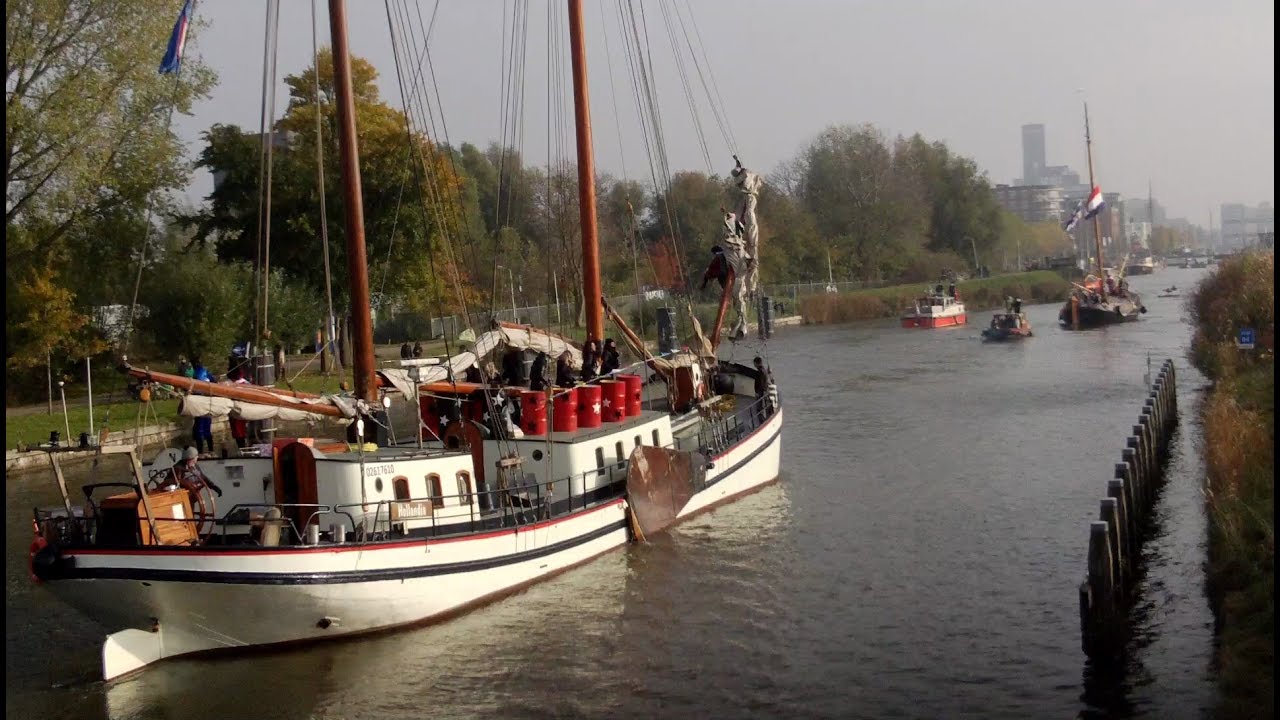In today’s fast-paced world, the ability to multitask is essential. Whether you’re managing work emails…

When it comes to urban infrastructure, bridges have long been symbols of connection and ingenuity. Among these, the SlauerhoffBridge stands out not just for its utility but also for its artistic and engineering brilliance. Located in the city of Leeuwarden in the Netherlands, this bridge is a prime example of how modern engineering can be integrated seamlessly with urban aesthetics. But what exactly makes the SlauerhoffBridge such a unique and noteworthy structure?
This article will explore the various aspects of the Slauerhoff Bridge, from its design and engineering features to its cultural and historical significance. By understanding the bridge’s importance, we can better appreciate its role in the urban landscape and why it has become a symbol of innovation and creativity.
What Is the Slauerhoff Bridge?
The Slauerhoff Bridge is a vertical lift bridge that spans the Harlingervaart Canal in Leeuwarden, the capital of Friesland, in the northern part of the Netherlands. The bridge is named after the famous Dutch writer J. Slauerhoff, who was born in Leeuwarden. The bridge connects two important parts of the city, facilitating both pedestrian and vehicular traffic. Its name serves as a tribute to Slauerhoff’s contributions to Dutch literature, adding a layer of cultural significance to the engineering marvel.
Opened in 2001, the bridge is known for its ability to lift vertically to allow ships to pass through, an essential feature in a city with a rich maritime history. This function is critical in maintaining the flow of both road and water traffic in the region. However, what truly makes this bridge stand out is not just its function but its striking design, which makes it a visually appealing and innovative structure in the heart of Leeuwarden.
Why Is the Slauerhoff Bridge a Design Triumph?
At first glance, the Slauerhoff Bridge is striking due to its contemporary and sleek design. Unlike many traditional bridges, which can often be bulky and purely functional, this bridge has an elegant and minimalist aesthetic that sets it apart. Its design blends functionality with artistic expression, serving as both a practical transportation tool and a work of art that enhances the surrounding landscape.
The bridge features a raised central section that can lift vertically, allowing for the passage of ships with large masts. When not in use for maritime traffic, the bridge serves as a regular roadway for cars and pedestrians. The lifting mechanism is an engineering marvel in itself, providing the perfect balance between allowing water traffic and maintaining road connectivity. The bridge is also designed with a steel structure that is both durable and visually impressive.
What adds to the overall appeal is the use of modern materials and the creative incorporation of light and shadows. At night, the bridge is illuminated, which creates a stunning visual effect that enhances its presence in the city. The illumination brings a new dimension to the bridge, allowing it to blend seamlessly with the night skyline of Leeuwarden. This innovative use of lighting helps transform the Slauerhoff Bridge into more than just a functional crossing—it becomes a symbol of modern Dutch architecture.
How Does the Slauerhoff Bridge Serve the Community?
While the aesthetic and technical qualities of the Slauerhoff Bridge are impressive, its primary role is to serve the people of Leeuwarden. As a transportation link, the bridge connects different parts of the city, facilitating the movement of both pedestrians and vehicles. This is especially important in a city like Leeuwarden, which is situated near water bodies, where maintaining smooth traffic flow is essential.
In addition to its basic function as a transport bridge, the Slauerhoff Bridge plays a key role in encouraging maritime trade and recreational boating. Its vertical lift mechanism allows larger vessels, including cargo ships, tourist boats, and yachts, to pass through. This feature underscores Leeuwarden’s long-standing connection to water-based commerce and travel. By facilitating the movement of ships, the bridge supports the local economy and allows the region to maintain its maritime heritage.
Moreover, the design of the bridge has contributed to the urban aesthetic of Leeuwarden, making it a landmark within the city. The bridge is not just a crossing—it is also a gathering point for locals and tourists, many of whom stop to admire its beauty. It is often seen as a symbol of modernity in a city that is deeply rooted in history. Its ability to blend seamlessly with the cityscape while serving such a crucial function has made it an indispensable part of the Leeuwarden urban experience.
What Are the Engineering Challenges of the Slauerhoff Bridge?
Building a vertical lift bridge like the Slauerhoff Bridge involves a range of engineering challenges. One of the key challenges in designing this type of bridge is ensuring that it can lift and lower with precision while maintaining the structural integrity of the entire system. The mechanism used to lift the bridge’s central span requires careful planning to ensure that it works smoothly and safely, every time it is needed.
Another challenge was the integration of the bridge into the city’s existing infrastructure. The bridge had to be designed in such a way that it could facilitate modern traffic needs while preserving the historic charm of Leeuwarden. Additionally, the engineers needed to ensure that the bridge would be able to handle the heavy maritime traffic while being adaptable to road traffic demands.
Designers had to find the right materials to create a balance between durability, functionality, and aesthetic appeal. Steel, commonly used in bridge construction, was selected for its strength and long-lasting properties. However, steel alone does not provide the visual appeal needed for such a striking design. As a result, a careful combination of modern materials was used to ensure both practicality and beauty.
How Does the Slauerhoff Bridge Contribute to the Culture of Leeuwarden?
The Slauerhoff Bridge is more than just an infrastructure project—it is also a reflection of Leeuwarden’s cultural and architectural ambitions. Its striking design and functionality make it an important cultural symbol for the city, reflecting a commitment to modernity while maintaining a connection to the past. As a bridge named after a renowned Dutch writer, it also underscores the literary and artistic heritage of Leeuwarden.
Furthermore, the bridge has become an iconic landmark in Leeuwarden, attracting visitors from around the world who are drawn not only by its function but also by its architectural significance. As a focal point in the city, it has contributed to urban tourism, bringing people to Leeuwarden to see its many attractions.
Additionally, the Slauerhoff Bridge has contributed to the broader urban development of Leeuwarden. Its presence signifies the city’s commitment to sustainable growth, where modern infrastructure is integrated thoughtfully into the existing urban environment. This vision reflects the city’s aspiration to be a hub for creativity, technology, and culture in the years to come.
What Is the Future of the Slauerhoff Bridge?
As Leeuwarden continues to grow and evolve, the Slauerhoff Bridge will remain a critical part of its transportation infrastructure. However, the future of the bridge is likely to involve further innovations in technology to maintain its functionality. With the rise of smart cities and intelligent infrastructure, the Slauerhoff Bridge may eventually incorporate new technologies to improve traffic management and streamline the bridge’s operation.
Moreover, as cities around the world look to enhance their environmental sustainability, the Slauerhoff Bridge may undergo upgrades to reduce energy consumption or incorporate green technologies. Given its importance to the city, any changes or updates to the bridge are likely to be carefully considered to maintain its aesthetic integrity while adapting to modern needs.
Conclusion
The Slauerhoff Bridge in Leeuwarden stands as a testament to modern design, engineering innovation, and cultural significance. By blending functionality with artistic expression, it has become more than just a bridge—it is a symbol of the city’s forward-thinking approach to urban development. From its aesthetic appeal to its practical role in facilitating maritime and road traffic, the Slauerhoff Bridge has cemented its place as one of the most impressive modern structures in the Netherlands.





